
Lesson plan and activities on Garcilaso de la Vega's poem "Sonnet 23"
- Subject:
- Literature
- Material Type:
- Teaching/Learning Strategy
- Author:
- Juan Herrero-Senes
- Susanna Pamies
- Date Added:
- 09/28/2020

Lesson plan and activities on Garcilaso de la Vega's poem "Sonnet 23"
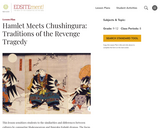
This lesson sensitizes students to the similarities and differences between cultures by comparing Shakespearean and Bunraku/Kabuki dramas. The focus of this comparison is the complex nature of revenge explored in The Tragedy of Hamlet, Prince of Denmark and Chushingura, or the Treasury of the Loyal Retainers.
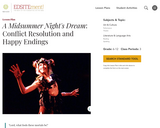
The activities in this lesson invite students to focus on the characters from A Midsummer Night's Dream, to describe and analyze their conflicts, and then to watch how those conflicts get resolved.
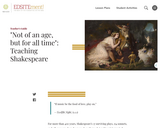
For more than 400 years, Shakespeare's 37 surviving plays, 154 sonnets, and other poems have been read, performed, taught, reinterpreted, and enjoyed the world over. This Teacher's Guide includes ideas for bringing the Bard and pop culture together, along with how performers around the world have infused their respective local histories and cultures into these works.

What if Shakespeare's Julius Caesar was set in a modern and newly independent nation? What do citizens look for in a leader? In this lesson, students not only consider the significance of this updated staging and political quandary, but will address important questions about how and why Shakespeare is adopted, adapted, and appropriated by people around the world in order for them to express their own political and social concerns through the universal language of Shakespeare.
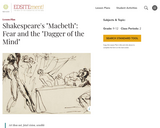
Shakespeare's preeminence as a dramatist rests in part on his capacity to create vivid metaphors and images that embody simple and powerful human emotions. This lesson is designed to help students understand how Shakespeare's language dramatizes one such emotion: fear.
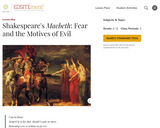
Students search an online version of Shakespeare's Macbeth for clues to the motives behind Macbeth's precipitous descent into evil.
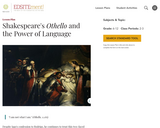
By means of group performances, writing exercises, and online search activities, students learn about the sometimes dangerous and destructive powers of language, particularly when wielded by such an eloquent and unscrupulous character as Shakespeare's Iago.
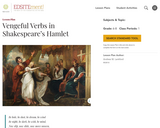
Expose middle school students to a first taste of Shakespeare from the angle of the ghost story and launch into the subject of verbs. In this lesson, they learn how Shakespeare uses verbs to move the action of the play. Students then distinguish generic verbs from vivid verbs by working with selected lines in Hamlet's Ghost scene. Finally they test their knowledge of verbs through a crossword interactive puzzle.